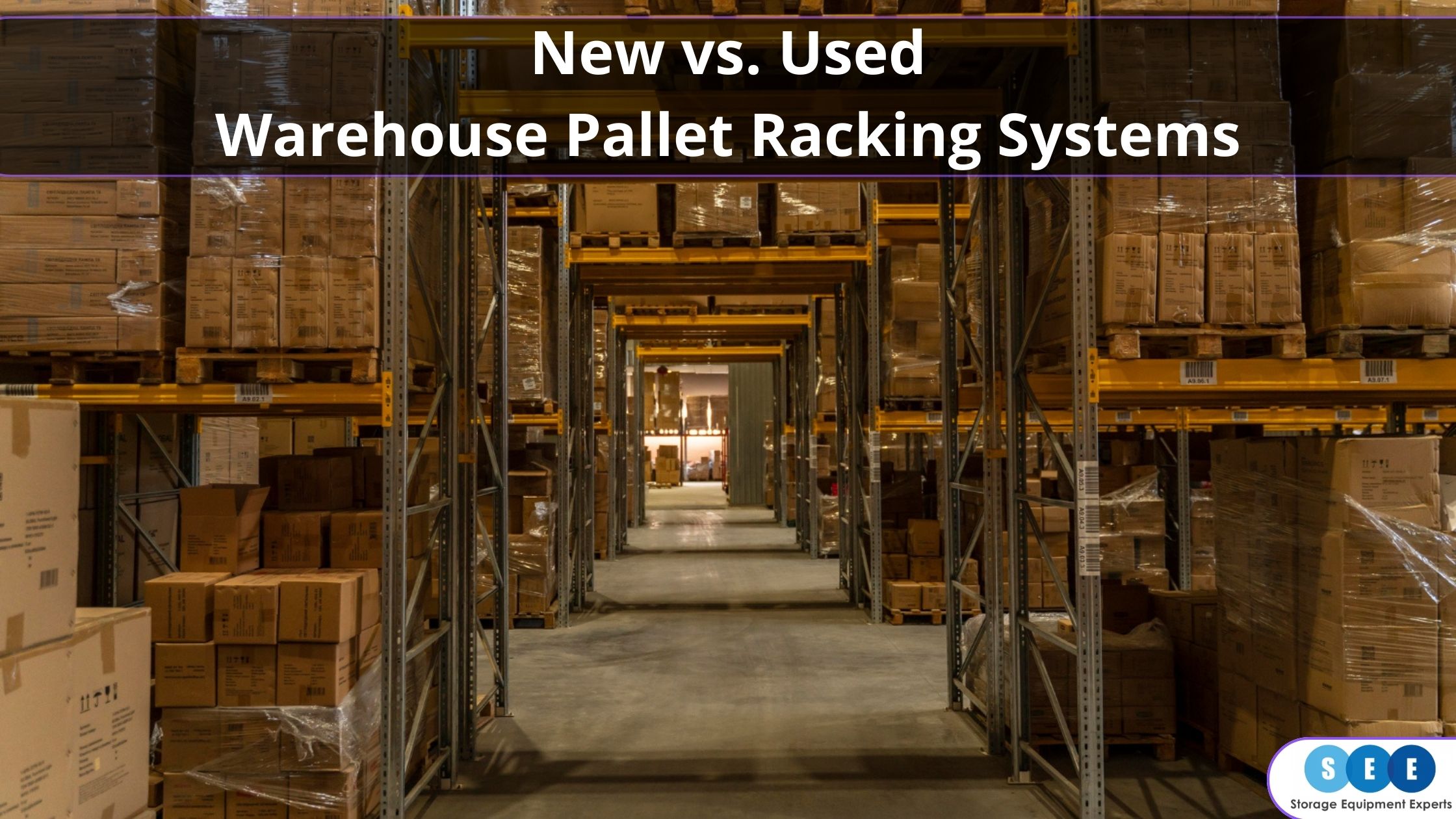Top 10 Ways You Can Prevent Damage To Your Pallet Racking Systems
Pallet racking systems are the undoubted champions of warehouse efficiency, offering indispensable storage solutions that maximize available space and boost workflow efficiency. Despite their robustness and critical role in seamless operations, these systems are not indestructible.
Ensuring your pallet racking systems remain in pristine condition is imperative for both the safety of your operations and maintaining peak efficiency. Warehouse managers who adopt a forward-thinking approach can markedly decrease the likelihood of damage and enhance the overall longevity of the storage solutions.
1. Regular Racking Inspections
A cornerstone practice in upholding the integrity of your warehouse pallet racking systems is making use of consistent inspections. Spotting issues early, from structural vulnerabilities to signs of wear, can prevent the escalation from minor annoyances to significant concerns.
Attention to detail is paramount for inspectors, and a keen eye on structural soundness is crucial. This includes vigilance for rust, dents, or any deterioration. These periodic checks are instrumental in preserving both the functionality and safety of the system.
2. Proper Training for Warehouse Staff
It is key to impart knowledge of the optimal use of pallet racking systems to your warehouse team. As informed handling and heightened awareness significantly lessen the likelihood of damage.
The training regimen should thoroughly cover operational basics, stressing the importance of sidestepping incorrect use and mishandling, frequent culprits of system damage.
3. Correct Loading Techniques
Utilizing the correct methods for loading and unloading pallets will prevent overstress on racking components. It’s important to distribute weight evenly and adhere to the system’s weight limits.
Offering guidance on these techniques ensures that the racking system remains stable and secure under load.
4. Installation of Protective Guards
Installing protective guards and barriers is effective measure to shield racking systems from accidental impacts from forklifts and pallet trolleys/dollies. These guards can be placed strategically around the system’s perimeter and at critical points prone to collision.
Different types of guards, such as column protectors and rail guards, provide an added layer of protection.
5. Forklift Operator Training
Forklift operators’ training involves handling the vehicle and understanding how to maneuver within the confined spaces of warehouse aisles without damaging racking systems.
To minimize the risk of accidents, operators should be trained on specific scenarios they might encounter, such as moving through tight spaces and operating in high-traffic areas.
6. Proper Racking Assembly and Installation
The importance of ensuring that pallet racking systems are assembled and installed correctly according to the manufacturer’s guidelines is not to be underestimated. An improper setup can lead to vulnerabilities that jeopardize the system’s overall stability and safety. It’s beneficial to involve professionals who specialize in racking installation, as they bring the expertise required to avoid common pitfalls, such as uneven load distribution or incorrect beam placement.
These specialists can also offer valuable insights into optimizing the layout for operational efficiency and safety. Regular audits post-installation to verify adherence to guidelines and identify any deviations early can mitigate risks effectively.
7. Adherence to Weight Limits and Capacity
Adhering to the designated weight limits and understanding the capacity of your pallet racking systems is an absolute must when it comes to maintaining structural integrity. Overloading poses a risk of collapse and can lead to long-term damage that compromises the racking’s durability.
Educating staff on the importance of weight distribution and the potential consequences of overloading is key. Displaying signage that clearly highlights weight limits and employing load sensors can serve as constant reminders and safety measures. Regular training sessions will reinforce the principles of safe loading practices.
8. Scheduled Racking Maintenance
Scheduled maintenance is about more than simple tasks like tightening bolts or swapping out worn components. For this activity to be truly effective, it should include a detailed examination of the entire racking system, scouting for any hints of potential problems, whether they concern structural integrity or the reliability of safety mechanisms.
Adopting a comprehensive checklist for evaluating the condition of the racks steers maintenance crews towards meticulous inspections. Collaborating with manufacturers for routine audits sheds light on emerging maintenance techniques and underscores specific areas in need of focus. Such consistent care is designed to ward off expensive interruptions and guarantees the warehouse remains a paragon of efficiency, all while keeping staff and inventory secure.
9. Utilization of Technology for Monitoring
Leveraging modern technology, including sophisticated warehouse management systems and sensors placed on racks, significantly augments the oversight of rack conditions.
These innovative solutions are programmed to alert personnel about potential issues promptly, providing a window to mitigate them before escalating into larger, more expensive setbacks.
10. Implementing a System for Reporting Damages
Establishing a straightforward and encouraging process for reporting any rack damage or wear proves invaluable. Cultivating a workplace culture where every team member feels compelled to report problems, no matter how minor, at the moment of discovery is essential.
Spotting issues early is a linchpin in dodging more severe complications later. Fostering a sense of stewardship and commitment towards the upkeep of the warehouse’s infrastructure instigates a proactive stance on problem-solving and heightens the safety and efficiency of operations.
Conclusion
The robustness and efficacy of pallet racking systems are the bedrock of smooth warehouse operations. Warehouse managers who take these tips and strategies on board can drastically reduce the risk of damage, securing a safe and productive environment for their essential storage solutions.
Each strategy, from diligent inspections and thorough training to advanced condition monitoring, is instrumental in safeguarding the system’s operation. Get in touch with SEE Racking Inspections for further information and guidance – our seasoned team is adept at ensuring your pallet racking systems are upheld to the utmost standards. Embrace the peace of mind that comes with optimized, safe, and efficient warehouse operations by reaching out today.


